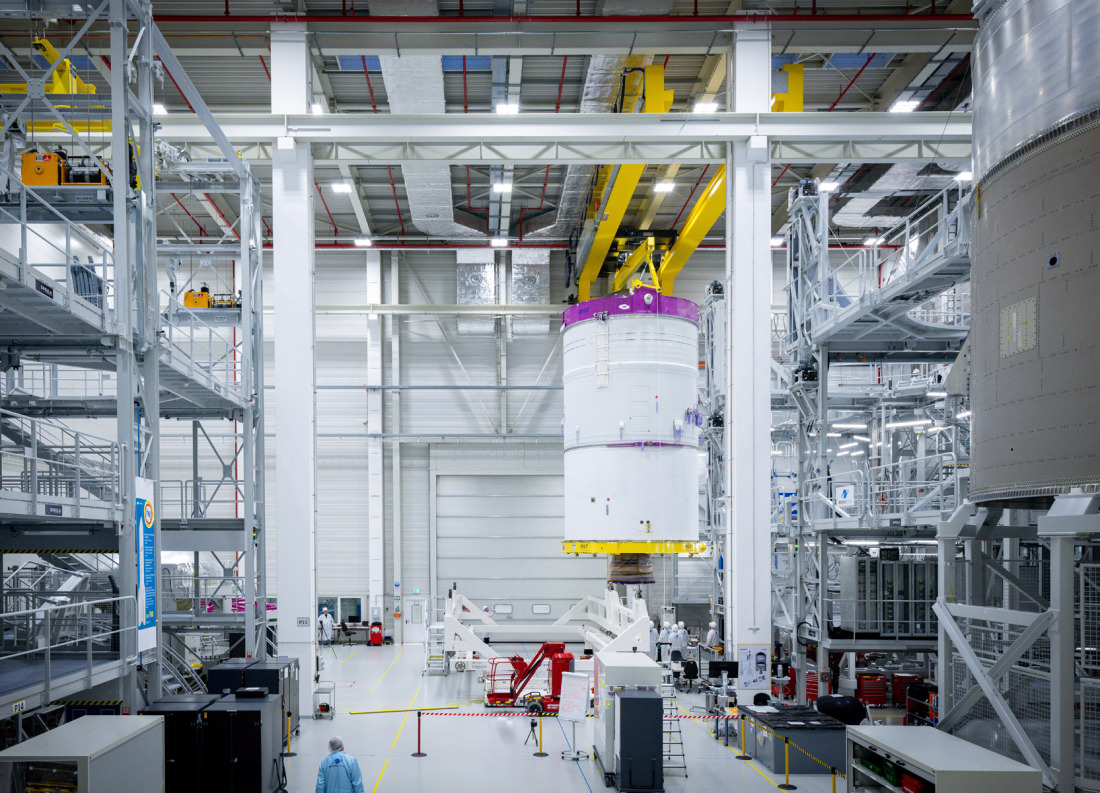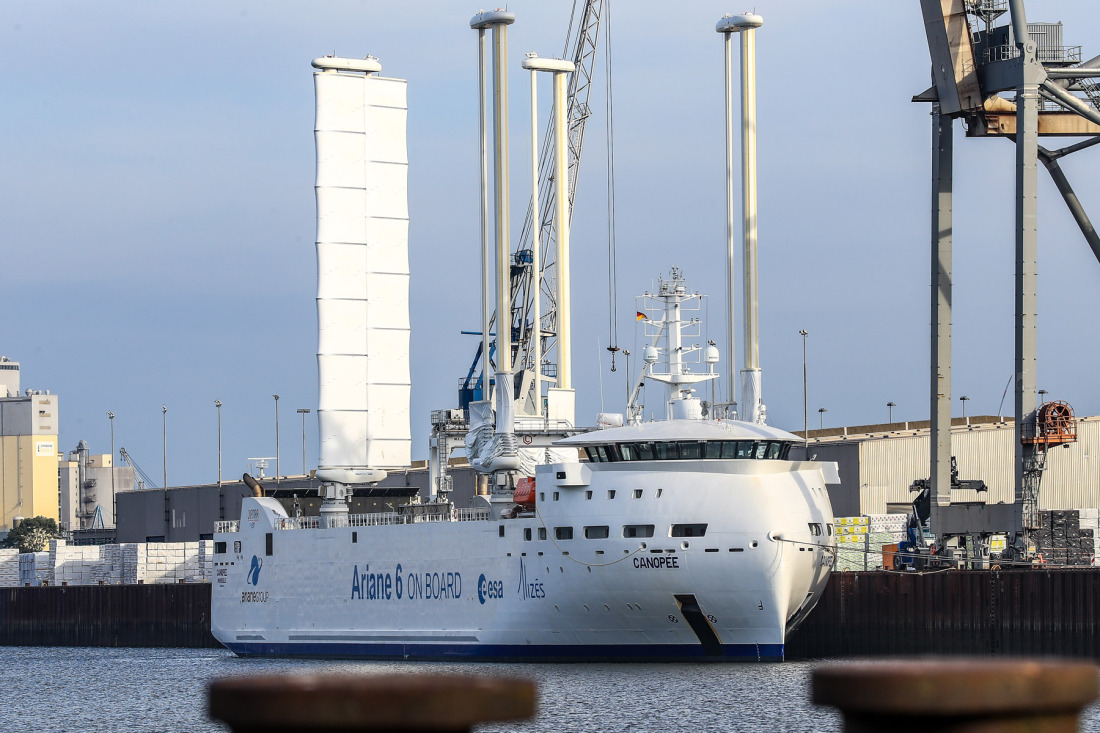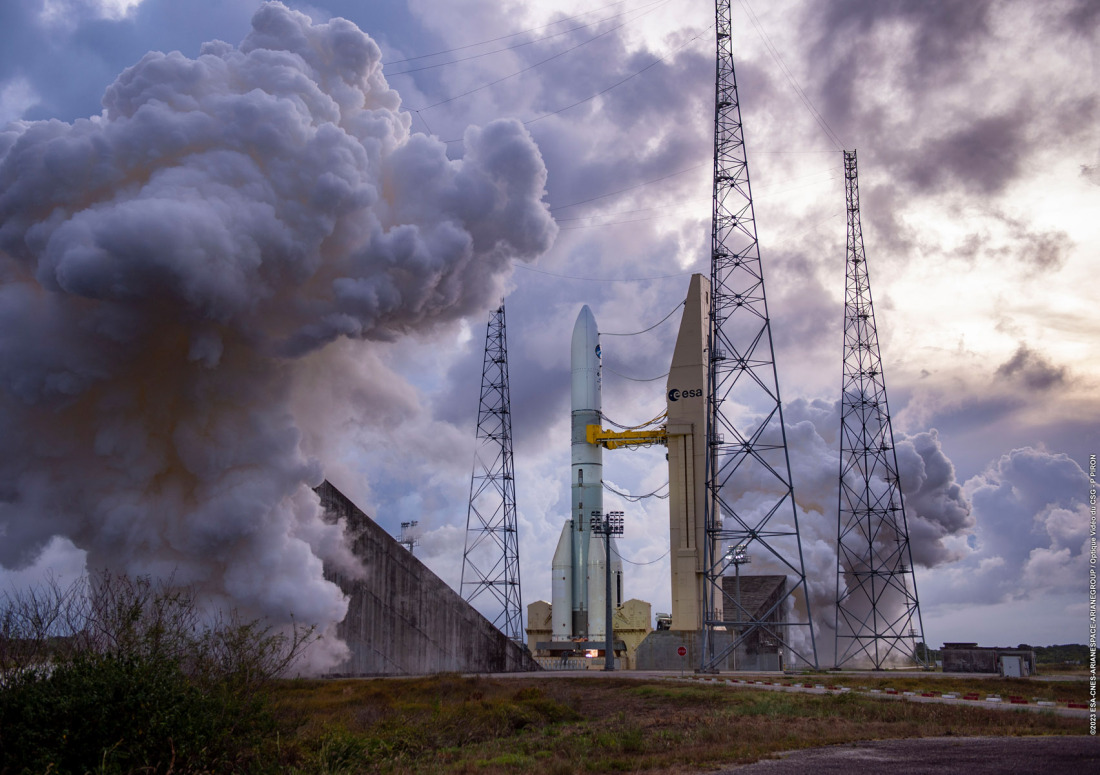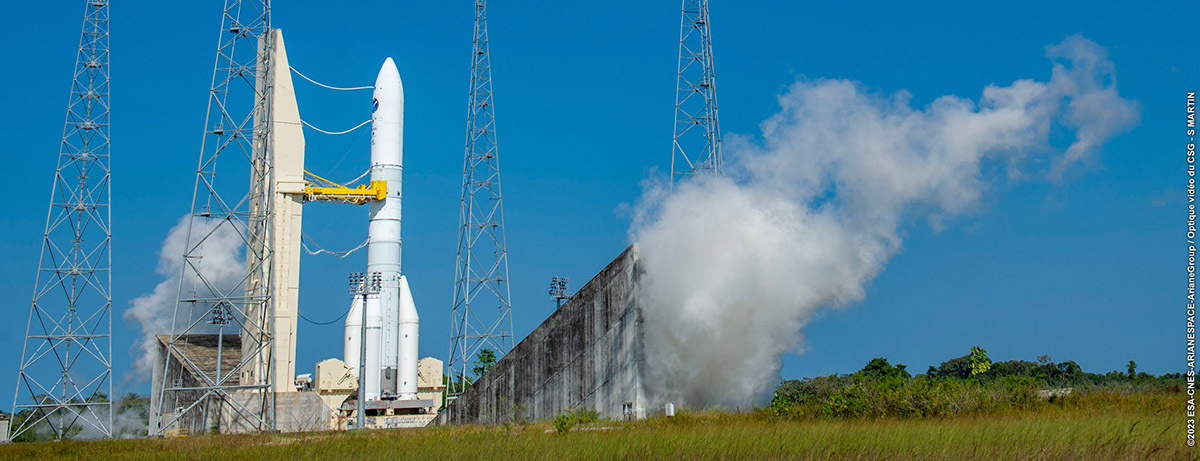From the Weser into Space
AerospaceThe ArianeGroup's Bremen site will supply the upper stage for Europe's new launch vehicles
Europe plans to use the new Ariane 6 launch vehicle to secure its own access to space. A central element of this, the upper stage that carries the "rocket's brain", comes from Bremen. When working on this upper stage, the engineers working at the ArianeGroup also developed an industrialised production process that has set global benchmarks for the aerospace industry.
Imagine the scene: half a dozen engineers, standing at a conference table and moving model figures around. "These model figures actually really helped us to get to grips with a very complex and complicated task", said Jens Lassmann, Head of Site Bremen for ArianeGroup, the European aerospace company. Around six years ago, the team was faced with the challenge of integrating a new production facility for the upper stage of the new European Ariane 6 launch vehicle in an existing manufacturing hall. The figures and models of the upper stage helped the planners to visualise the processes in detail. Production is now well under way and several new upper stages are being built in the vast hall, which covers 6000 square metres and has a height of 21 metres. A particularly interesting example was completed at the beginning of this year: "We expect that this will be part of the first Ariane 6 to be launched into space this year, from French Guiana", said Jens Lassmann, clearly delighted with the prospect.

More than 50 years of aerospace expertise have gone into creating the Ariane 6
Bremen and the upper stages of Ariane rockets: a close relationship with a long history. For more than 50 years, engineers and technicians working by the River Weser have made a decisive contribution to ensuring Europe has free access to space. In 1974, "Entwicklungsring Nord“ (ERNO, the Northern Development Circle) in Bremen, one of the predecessors of today's ArianeGroup, developed the upper stage for Europe's first large-scale launch vehicle, which went into production in 1979. Since then, Bremen (which is the world's second largest aerospace centre after California) has supplied upper stages for every Ariane type. The upper stage holds the fuel tanks for liquid oxygen and liquid hydrogen and is also where the Ariane's "brain" (which processes the data needed to guide the rocket accurately to its destination in space) is located.
Expertise in aerospace development
Airport-City Bremen is not merely the site at which the rocket's upper stages are built from individual components, which come from all over Europe. ArianeGroup's largest facility in Germany is also where the upper stage is developed. Every mission is unique and the rocket's upper stage must be able to handle all the different challenges. The development teams are already busy working on making future versions even more powerful. "The new Ariane 6 Facility demonstrates that Bremen is a crucial centre of competence for the European space industry", said Pierre Godart, ArianeGroup CEO in Germany at the inaugural ceremony. Godart continued to say that, with the help of the new Ariane 6, "we will carry out all missions to all orbits in support of European space ambitions and guarantee Europe's independent access to space". Even manned missions would be something to be considered – the ArianeGroup in Bremen is currently working on a suitable design.
The upper stages for the Ariane 5 were also made in Bremen. After 116 launches from the European Spaceport in Kourou, the last Ariane 5 lifted off on July 5th 2023, carrying the German "Heinrich Hertz" communications satellite which was also built in Bremen. Originally, a modified Ariane 5 ME rocket was to carry out these types of missions. The lofty hall in the Airport City, which now houses the integration facility for the latest upper stage, was built for them. However, at a European Space Agency Council of Ministers meeting in November 2014, the ESA Member States decided to build an entirely new rocket. This new vehicle would be half as expensive as the previous model.

Higher production rates at a lower cost
This is what this meant for the site in Bremen: "We had to plan the production facilities at the same time as developing the rocket", recalled Jens Lassmann. To achieve the cost objectives, it was necessary to completely rework and streamline the production process and also double the annual production rate to eleven or twelve units. In addition, entirely new procedures, such as processes for cleaning fuel tanks and insulating their outer walls, were developed. How that was achieved is a closely-kept secret. International competitors do not have anything similar for reducing costs whilst also improving quality. "It's clear to see that all our development work has been a great success", said Jens Lassmann with a smile, pointing to the bustling activity in the enormous clean room in which the two tanks, the engine and the electronic control systems are fitted together to form a tall tower, weighing almost 10 tonnes.

Environmentally friendly design of the Ariane 6 upper stage
Every upper stage is built in the same way, in fixed stages. The upper stages grow and grow, starting with the tanks, which MT Aerospace (a subsidiary of OHB, a space company based in Bremen) assemble close by. First of all, an automated process uses lasers to strip the surface of the tanks. Robots then apply the insulation (a type of polyurethane foam). Finally, the interior of the tanks are cleaned in another automated process which looks like a super-sized washing machine. "We have succeeded in replacing the chemicals previously used in these processes by using environmentally friendly alternatives and lasers", said Lassmann, happily. At the end of the production chain, there are the three assembly towers in which the components are brought together. The technicians refer to the process of fitting the tanks, the engine and the electronics together as the "marriage" stage.
Build number 3 has already been delivered. This is the first model that will be launched into space. Build numbers 4 to 6 are in the final stages of assembly and the components for build number 7 are already to hand. The success of this meticulous planning is already clear to see: "We have been able to build the second model 30% more quickly than the first", stated Lassmann. However, the specialists in Bremen have set themselves an even greater challenge. And to help them optimise the production process even further, they always come back to simulating the processes by moving the model figures around the scale model of the production hall.
Success Stories
The history of space travel in Bremen
Small circle, big impact: With the founding of the “Development Ring North” (ERNO) in July 1961, Bremen began its development into one of the world’s leading spaceflight locations. Even the return of humans to the Moon would hardly be possible without technology from the Hanseatic city.
Learn moreHow a space enthusiast campaigns for women in STEM fiels and Bremen as a space location
How does someone from a small village in Poland end up working on human spaceflight in Bremen? Dr. Anna Chrobry shares her journey through science, passion, and perseverance—and explains why she proudly calls herself a "space girl."
Learn moreVisions for the future of aerospace
From car navigation systems to weather reports - hardly anything works without satellites. They need fuel, but this is often toxic. The Institute of Aerospace Technology at Bremen University of Applied Sciences is researching environmentally friendly alternatives. What the future of space travel could look like.
Learn more

